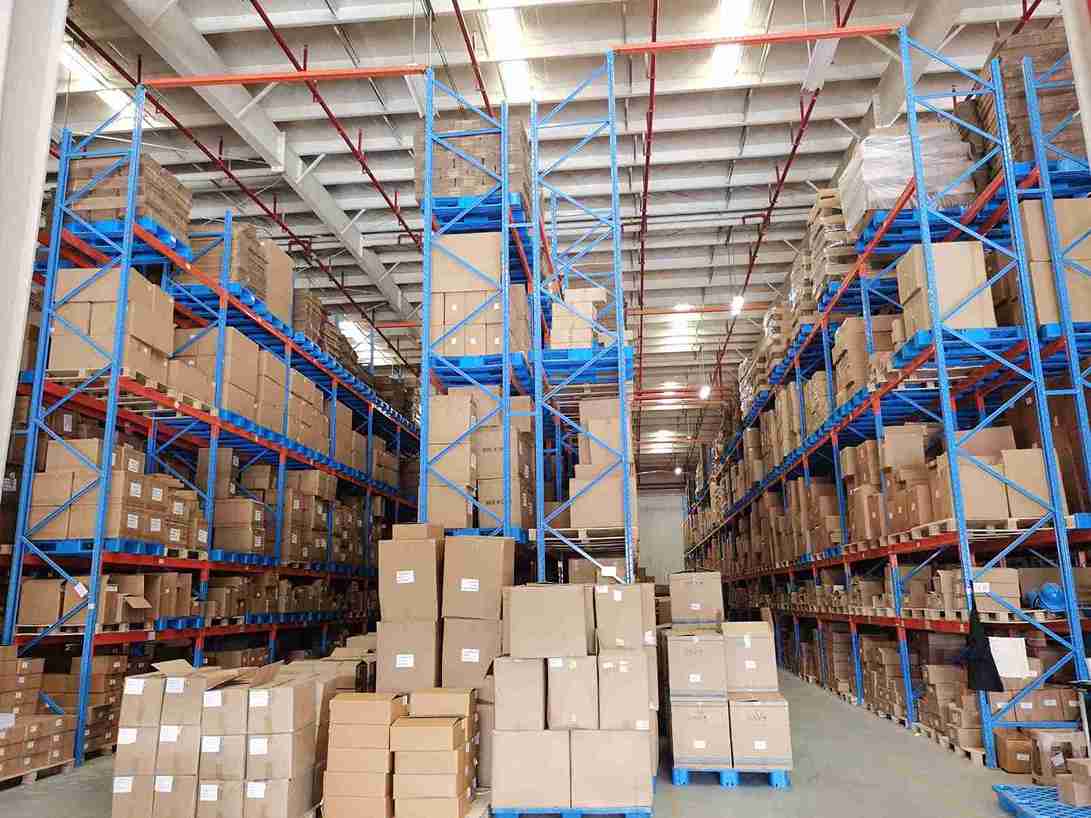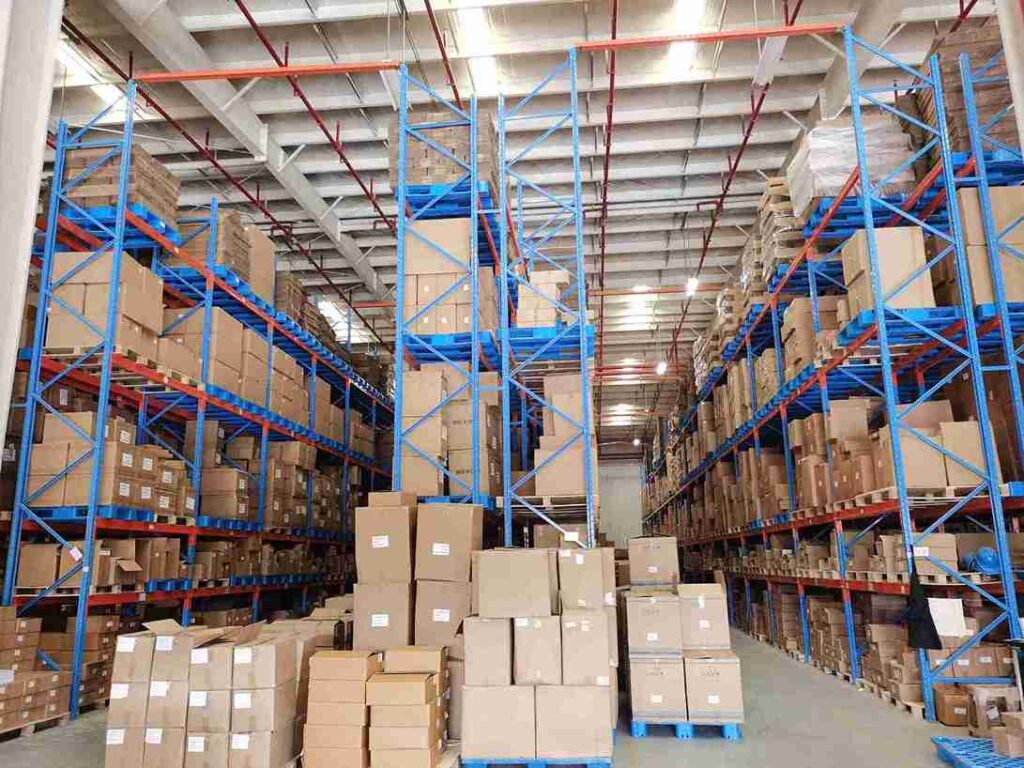📐 "First 50 Enterprise Queries Get Custom 3D Warehouse Design" Plan

Introduction: The Critical Role of Aisle Width Optimization for Racking
In the competitive world of industrial warehousing, aisle width optimization for racking is one of the most impactful yet often overlooked strategies. The right aisle width optimization for racking can mean the difference between a cramped, inefficient warehouse and a streamlined, high-capacity storage facility.
This comprehensive guide explores aisle width optimization for racking in depth, covering everything from forklift maneuverability to advanced very narrow aisle (VNA) systems. Whether the goal is to increase storage density, improve safety, or enhance workflow efficiency, mastering aisle width optimization for racking is essential for modern warehouses.

1. The Fundamentals of Aisle Width Optimization for Racking
1.1 Why Aisle Width Optimization for Racking Matters
Every warehouse manager knows that space is money. Aisle width optimization for racking directly impacts:
-
Storage capacity – Narrower aisles allow for more racks.
-
Operational efficiency – Properly optimized aisles reduce travel time.
-
Safety compliance – OSHA and ANSI regulations require specific clearances.
1.2 Key Measurements in Aisle Width Optimization for Racking
-
Clear Aisle Width – Distance between two parallel racks.
-
Forklift Turning Radius – Dictates minimum aisle width.
-
Pallet Overhang – Must be factored into aisle calculations.
2. How to Calculate the Ideal Aisle Width for Your Racking System
2.1 Step-by-Step Aisle Width Optimization for Racking
-
Determine Equipment Requirements
-
Standard forklifts need 11–13 ft aisles.
-
Reach trucks operate best in 8–10 ft aisles.
-
VNA trucks can function in 5–7 ft aisles.
-
-
Assess Pallet Dimensions
-
Standard 48” x 40” pallets require at least 5 ft of clearance.
-
Oversized or irregular loads may need custom racking configurations.
-
-
Test Before Finalizing
-
Use 3D warehouse modeling software (e.g., AutoCAD, SketchUp).
-
Conduct real-world forklift trials to confirm maneuverability.
-
2.2 Common Mistakes in Aisle Width Optimization for Racking
-
Ignoring future expansion needs – Aisles should allow for scalability.
-
Underestimating safety margins – OSHA mandates minimum clearances.
-
Choosing the wrong forklift type – Equipment must match aisle specs.
3. Advanced Techniques in Aisle Width Optimization for Racking
3.1 Very Narrow Aisle (VNA) Racking Systems
-
Best for high-density storage – Increases capacity by 40–50%.
-
Requires specialized equipment – Turret trucks or guided vehicles.
-
Ideal for cold storage & automated facilities – Minimizes wasted space.
3.2 Automated Storage and Retrieval Systems (AS/RS)
-
Eliminates traditional aisle constraints – Uses robotic shuttles.
-
Maximizes vertical storage – Ideal for high-throughput operations.
4. Industry Standards & Compliance in Aisle Width Optimization for Racking
4.1 OSHA Regulations for Warehouse Aisles
-
Minimum 3 ft clearance for pedestrian walkways.
-
Emergency exit accessibility must be maintained.
4.2 ANSI MH16.1 Guidelines
-
Standard forklifts: 8–12 ft aisles.
-
Narrow-aisle forklifts: 5–7 ft aisles.
5. Real-World Case Study: How Aisle Width Optimization for Racking Boosted Efficiency by 35%
Company X, a mid-sized distribution center, struggled with low storage density due to inefficient aisle width optimization for racking. After implementing VNA racking with guided turret trucks, they:
-
Reduced aisle widths from 12 ft to 7 ft.
-
Increased storage capacity by 35%.
-
Cut forklift travel time by 20%.
6. Future Trends in Aisle Width Optimization for Racking
6.1 AI-Powered Warehouse Layout Optimization
-
Machine learning algorithms analyze traffic patterns.
-
Dynamic aisle adjustments based on real-time demand.
6.2 Autonomous Mobile Robots (AMRs) in Narrow-Aisle Warehousing
-
No fixed aisles needed – Robots navigate freely.
-
Flexible storage configurations – Adapts to seasonal demand changes.
Conclusion: Mastering Aisle Width Optimization for Racking for Long-Term Success
Aisle width optimization for racking is not a one-time task—it’s an ongoing process that evolves with technology and operational needs. By implementing the right strategies, warehouses can maximize storage, improve safety, and reduce operational costs.
For businesses looking to enhance their racking efficiency, investing in aisle width optimization for racking is a proven way to stay ahead in the logistics industry.
FAQs: Aisle Width Optimization for Racking
1. What’s the smallest possible aisle width for a reach truck?
Most reach trucks operate in 6–7 ft aisles, but specialized models can go narrower.
2. Can I use standard forklifts in narrow aisles?
No—narrow-aisle forklifts (e.g., turret trucks) are required for safety and efficiency.
3. How does double-deep racking affect aisle width needs?
It reduces aisle space but requires extended-reach forklifts.
4. What’s the best racking system for maximizing storage density?
VNA racking with guided turret trucks offers the highest density.
5. How often should aisle widths be reevaluated?
At least annually, or whenever new equipment or storage needs arise.




